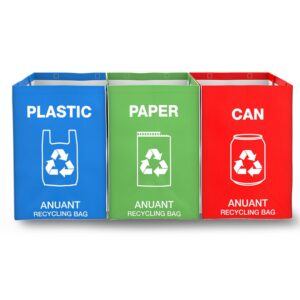Let’s face it, we’re all feeling the pinch of rising electricity bills and the growing pressure to protect the environment. Switching to renewable energy at home sounds like the ideal solution, but if you’re like most people, you’re probably thinking: “Isn’t that expensive?” Good news, it doesn’t have to be.
The truth is, you don’t need to break the bank to make your home more energy-efficient or start using renewable energy sources. With the right strategies, even households on a budget can start the transition. In this post, we’ll explore exactly how you can switch to renewable energy at home, affordably and practically.
Why Switch to Renewable Energy?
Before we dive into the how, let’s talk about the why.
- Lower Energy Bills
Renewable energy can drastically reduce or even eliminate your electricity bills over time [U.S. Department of Energy, 2022]. - Environmental Benefits
Solar, wind, and other renewables produce little to no greenhouse gas emissions. You’re helping combat climate change with every kilowatt-hour [IPCC, 2023]. - Energy Independence
No more relying 100% on your local grid or worrying about electricity price spikes and blackouts. - Home Value Boost
Homes with solar panels or other green features often fetch higher prices on the market [National Renewable Energy Laboratory (NREL), 2019]. - Incentives and Rebates
Many governments and utilities offer rebates, tax credits, or even free energy audits to support your green goals [IRENA, 2023].
Step-by-Step Guide to Switching to Renewable Energy on a Budget
You don’t need to install a full solar power system on day one. Let’s break down how to start small and build up over time.
1. Start With Energy Efficiency First
Before you even think about solar panels, make sure your home is as efficient as possible. Why? Because the less energy you use, the less renewable energy you’ll need.
Easy (and cheap) ways to improve energy efficiency:
- Switch to LED lighting: Saves up to 80% more than traditional bulbs [Energy.gov, 2022].
- Seal drafts and insulate: Weather-strip doors, seal windows, and insulate your attic [EPA, Energy Star].
- Use smart power strips: They cut off power to appliances when not in use.
- Upgrade to energy-efficient appliances: Look for Energy Star-rated products.
Bonus Tip: Many local utilities offer free home energy audits to help you identify where you’re wasting power.
2. Choose Green Energy From Your Utility (If Available)
In some regions, your electricity provider gives you the option to buy renewable energy (like wind or solar) directly through your utility bill. This means:
- No upfront cost
- No equipment to install
- No maintenance
It might cost a little more per unit of energy, but you’re supporting clean energy generation without any of the hassle.
Search tip: Look for programs like “Green Power” or “Renewable Choice” on your utility’s website. In Kenya, check with Kenya Power’s Green Energy Tariff Pilot [Kenya Power, 2022].
3. Try Community Solar or Wind Projects
If you rent your home, have a shaded roof, or just can’t install panels right now, you’re not out of options.
Community solar allows multiple households to share a solar power system. You “subscribe” to a portion of the energy it produces and get a credit on your electricity bill.
Benefits:
- No installation required
- Often cheaper than traditional energy
- Supports clean energy locally
Search tip: Look for “community solar projects near me” or check if your utility has a shared solar program. Programs like Shared Solar in New York or California’s Community Solar program are good examples [NREL, 2021].
4. Go Solar (Affordably)
Okay, so solar panels are a bigger commitment but the prices have dropped significantly over the years.
Here’s how to do it affordably:
Solar Leasing or Power Purchase Agreements (PPAs)
You don’t pay for the panels, a company installs them on your roof and you buy the electricity at a fixed, often lower, rate than the utility [SEIA, 2023].
Government Incentives
Many countries (including Kenya, the US, the UK, and many in the EU) offer:
- Tax credits (up to 30% in the US via the Inflation Reduction Act)
- Zero-rated import tax on renewable energy equipment (e.g. Kenya’s VAT Act 2013, 1st Schedule)
- Solar rebates and grants (like UK’s Smart Export Guarantee)
Solar Co-Ops
Join a local solar co-op to get bulk discounts with others in your community. For instance, Solarize campaigns in the US have helped homeowners save up to 20% on installation [Solar United Neighbors, 2022].
Fact: According to the International Energy Agency, solar is now the cheapest form of electricity in history [IEA World Energy Outlook, 2020].
5. Start Small: Portable Solar Options
You don’t have to go all-in with a rooftop solar system right away. There are small-scale solar options you can use today:
Solar gadgets to consider:
- Solar phone chargers: Useful and cheap (some under $30).
- Solar lanterns and lamps: Great for outdoor or emergency use. Common in off-grid areas in Kenya and Sub-Saharan Africa [Lighting Africa, World Bank Group].
- Plug-and-play solar kits: Charge a few appliances or lights; expandable over time.
These are also perfect for camping or off-grid weekends.
6. Explore Wind or Micro-Hydro (If You’re Rural)
If you live in a rural area with consistent wind or access to flowing water, you might consider:
- Small wind turbines
- Micro-hydro generators
These systems can power an entire home if conditions are right, though they do need upfront investment and more site-specific planning.
Note: Wind systems are most effective in open, windy areas, not dense suburbs. The U.S. Department of Energy recommends at least 1-acre open space and average wind speeds above 9 mph (14.5 km/h) [DOE, Wind Energy Basics].
Combine Renewable Energy With Smart Use
Just installing solar or buying green power isn’t enough, how you use energy still matters.
Try these habits:
- Run heavy appliances (e.g. laundry) during daylight hours if you’re using solar.
- Unplug “phantom load” devices (TVs, chargers, etc.).
- Install a smart thermostat to reduce heating/cooling waste.
- Harvest rainwater and install low-flow fixtures to reduce water heating demand.
Tracking Your Progress
To stay motivated and see your impact:
- Monitor energy use with apps or smart meters. Try Google Nest, Sense, or your utility’s online portal.
- Calculate your carbon footprint monthly using tools like [Carbon Footprint Calculator by EPA or WWF].
- Set goals (e.g. 20% solar-powered by year-end).
Inspiration: Even reducing your carbon footprint by 10–20% per year can make a massive difference over time — especially if more households do the same [UNEP, 2021].
Funding & Incentives to Look Out For
Affording your transition is easier when you know where to look.
Global/National Incentives:
- US: Federal Investment Tax Credit (ITC), state-level rebates [SEIA, Energy.gov]
- UK: Smart Export Guarantee (SEG), Green Homes Grant [Gov.uk]
- Kenya: VAT exemptions for renewable energy products, partnerships with REA (Rural Electrification and Renewable Energy Corporation)
- EU: EU Green Deal and country-specific renewable energy funds [European Commission, 2022]
Also check:
- NGOs or development agencies (e.g., UNDP, SNV)
- Crowdfunding platforms for solar kits (e.g. Trine)
- Pay-as-you-go (PAYGO) solar companies like M-KOPA, Azuri, and BBOXX
Final Thoughts: Renewable Energy Is More Doable Than You Think
You don’t need to be rich to make a difference. Whether it’s a $10 solar lamp or a full rooftop system, every step counts. The transition to renewable energy isn’t just about the environment, it’s about long-term savings, energy independence, and creating a resilient home for you and your family.
Summary: Quick Budget-Friendly Actions to Start Today
| Action | Cost | Impact |
|---|---|---|
| Switch to LEDs | Low | Saves energy immediately |
| Join a green power program | Low–Medium | Supports clean grid energy |
| Use solar gadgets | Low | Great for charging phones/lights |
| Get a home energy audit | Free–Low | Identifies energy waste |
| Install smart thermostat | Medium | Optimizes heating/cooling |
| Lease solar panels | Low upfront | Long-term savings |
References
- International Energy Agency (IEA). World Energy Outlook 2020.
- IPCC. AR6 Climate Change 2023 Synthesis Report.
- SEIA (2023). Residential Solar Explained.
- U.S. Department of Energy. Energy Efficiency and Renewable Energy.
- Energy Star. Appliances and Home Energy.
- Lighting Africa, World Bank. Solar Off-Grid Market Trends Report 2020.
- NREL (National Renewable Energy Laboratory). Community Solar Basics.
- Kenya Revenue Authority. VAT Act.
- UNEP (2021). Making Peace with Nature Report.
- EPA. Home Energy Audit Guide.
- Solar United Neighbors. How Solar Co-Ops Work.
- European Commission. EU Green Deal Factsheet.
- WWF. Footprint Calculator.
- Kenya Power. Green Energy Tariff Pilot Program.
- SNV, UNDP. Renewable Energy Access and Finance Initiatives in Africa.



